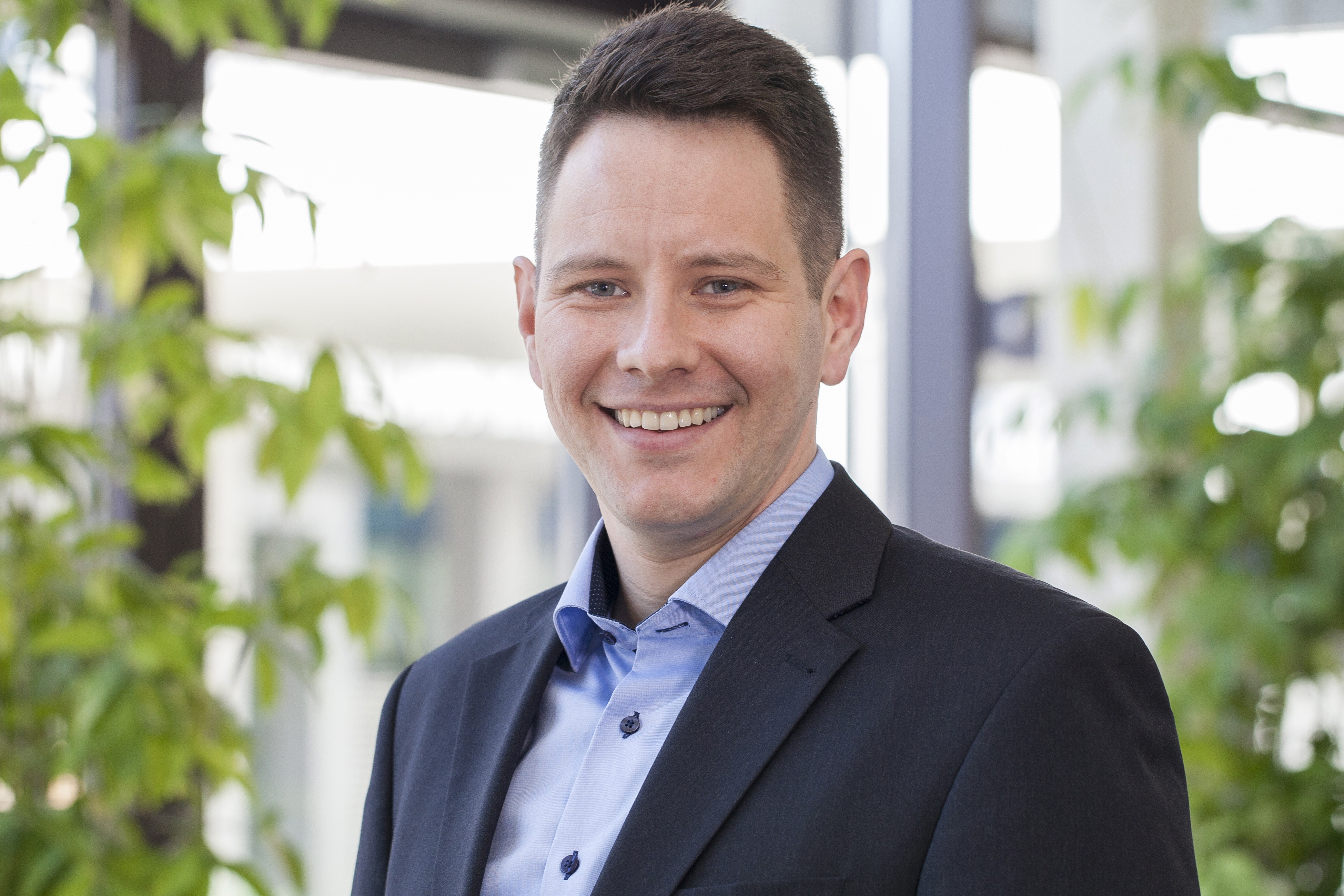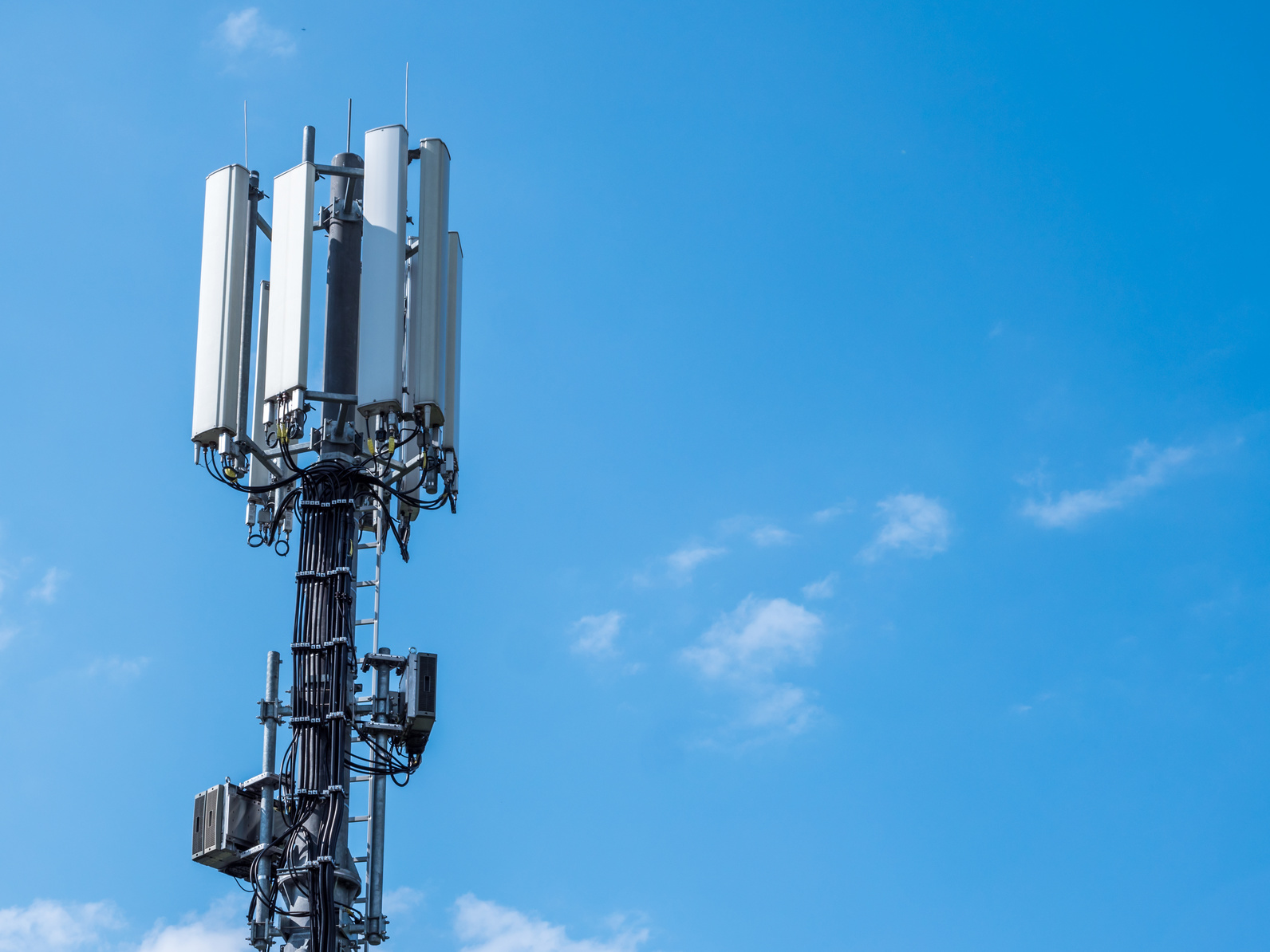Fraunhofer IAF takes part in the joint EU project »5G GaN2«
Using Gallium Nitride for a Powerful 5G Cellular Network
The cellular network of the fifth generation (5G) will enable data transmission between people, devices and machines in real time. So far, no technology exists that allows for a reliable, fast and energy-efficient 5G network. In the EU project »5G GaN2«, 17 partners from research and industry join forces in order to develop cost-effective and high-performance technologies based on gallium nitride for the upcoming mobile communications standard. The consortium, which also includes Fraunhofer IAF, started its work in July 2018.
To date, primarily people communicate via the wireless radio network. In the cellular network of the fifth generation (5G), however, cars, devices and production machines will also transmit data in real time. In the future, these high data rates will be covered by frequency bands in the millimeter-wave range (> 24GHz). They provide a ten times higher bandwidth in comparison to currently available frequency bands (< 3 GHz) and have now been internationally approved for use in order to significantly increase the bandwidth range. However, these new frequency ranges cannot be served efficiently with present mobile and antenna technology. »It is crucial to improve the available output power and energy efficiency of the network infrastructure for these innovative frequency bands by using advanced gallium nitride technology,” says Dr. Dirk Schwantuschke, who manages the project on the part of Fraunhofer IAF. In the project »5G GaN2«, components, devjces and circuits for the 5G base stations will be developed on the basis of gallium nitride (GaN). »The contribution of Fraunhofer IAF to the overall project will be the development of power amplifiers in the so-called E-band, the frequency range around 80 GHz,« explains Schwantuschke.
Lowering Cost and Improving Performance
Base stations are the junctions of cellular networks. They record the transmitted data of a radio cell and pass them on. To ensure a smooth flow of data via frequency bands in the millimeter-wave range in the future, the technologies of base stations need to fulfill two criteria: the output power needs to be improved while keeping the cost and the energy consumption low at the same time. To achieve these goals, the project partners of »5G GaN2« count on GaN-based technology and amplifier circuits. Electronic devices and systems based on GaN are significantly more energy-efficient than conventional silicon (Si) ones. The GaN devices will optionally be applied on cost-efficient Si substrates. Another aspect of the project is the combination of various devices in a single package using innovative approaches with regard of packaging technologies, in order to reduce costs.
The aim of the project is the realization of demonstrators at 28 GHz, 38 GHz and 80 GHz. These demonstrators will serve as key technologies for the development of a powerful and energy-efficient 5G cellular network based on GaN. ECSEL, an initiative of the European Commission, promotes the three-year joint project in which 17 project partners from seven countries cooperate. ECSEL supports development, research and innovation in the field of electronics by bringing together various partners from industry, research and the public.

Development of Amplifiers at Fraunhofer IAF
Fraunhofer IAF has intensive know-how on the development of amplifiers based on GaN. »GaN-based devices are especially well suited for powerful high -frequency amplifiers that are required for base stations and the infrastructure of the cellular network, as they allow to provide high frequencies at high power. The amplifiers developed at Fraunhofer IAF are capable of sending more data faster and more energy-efficiently through the cellular network,« says Schwantuschke.
Apart from Fraunhofer IAF, the consortium of the project comprises the complete value chain of the mobile phone technology: wafer suppliers, semiconductor manufacturers and system integrators develop innovative GaN based technologies for the cellular network of the fifth generation together with universities and research institutes .
For more information please visit https://www.5ggan2.eu/.
The use of these photographs is only permitted in relation to this press release.
Last modified:
 Fraunhofer Institute for Applied Solid State Physics IAF
Fraunhofer Institute for Applied Solid State Physics IAF
